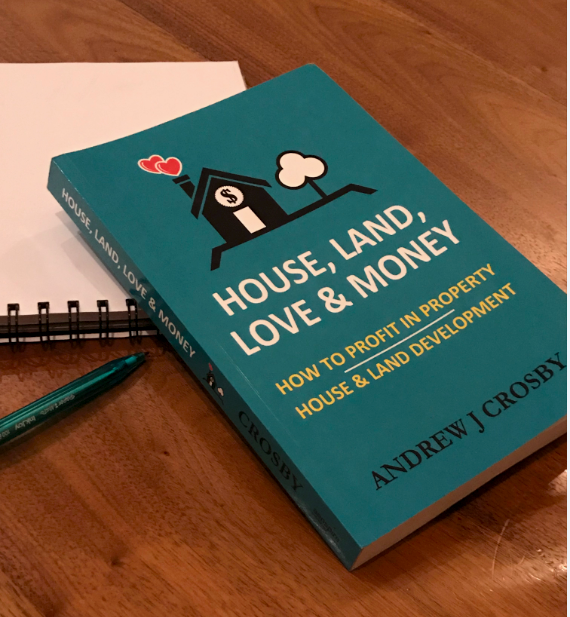To sign up your buyers you will need a sale and purchase agreement. In many jurisdictions there will be a standard sale and purchase agreement put out by the local professional real estate association. These contracts cater mainly towards existing home sales and often are not always appropriate for new developments, especially where you are pre-selling the home before construction is complete. Therefore, a bespoke sale and purchase agreement or a number of special conditions attached to the standard S&P agreement is typically required.
The sale and purchase agreement should identify the section or house number and the price. Typically you will include the house or section plans as well as outline specifications. For the developer the less information that is included the better to provide maximum flexibility. For the buyer the converse applies.
As a developer you need the sale and purchase agreement to both lock in the sale and protect you from implications that arise due to obstacles and unforeseen issues during planning, design and construction. You also want to protect the value of the development as you continue to sell it down as well as potentially lock-in further revenue streams. Engage an attorney to draft a number of pro-developer vendor clauses[1] into your sale and purchase agreement to address potential issues, for example:
- The right to cancel the contract if a planning or building consent is not achieved.
- The right to cancel the contract if a minimum number of sales is not achieved.
- The right to cancel the contract if unforeseen events prevent completion of the homes. An aggressive clause would be for any economic or practical reason, like an increase in construction costs and a conservative clause would limit it to war or acts of god.
- Ability to make like for like replacements in the specification without consulting the buyer — this is so you are protected if an item (like the type of tile) becomes obsolete and no longer available.
- Minor changes can be made to the plans without consulting the buyer; you need some wriggle room to make changes that may be forced on you by regulatory approval process or design issues that were not fully resolved at the time of marketing.
- Prevent the purchaser from lodging complaints, or taking legal action over noise resulting from construction and marketing activities on the development site. This is important where you expect to settle homes while construction is still underway nearby or when you have future stages to complete at a later date.
- Right for the developer to provide exclusive utility, property management, property maintenance, and other services to the property and could be accompanied by restrictions on whom the purchaser may use. Typically this is registered on the title as well so the condition runs with the land rather than the home buyer.
- Right to create easements, rights of entry and access. You may need to provide for services that run within private boundaries, maintenance strip easements allowing others to access tight spots to undertake work and shared private driveways. These ‘instruments’ will be registered on the titles.
- When selling sections, there are covenants on the timing, type, design, size, and/or value of the house that must be built on the section. Similarly you may want to stipulate restrictions on what is allowed to be onsite prior to construction — no caravans or trash or unsightly mess.
- Rules describing how long the buyer has to advise the developer of defects to fix after settlement.
- Rules of conduct required within the development once settled such as keeping front yards clean, no washing on decks, no business signage, no real estate signs, noise limits, and anti-public nuisance regulations. There could be local authority rules and existing legislation that limits what you can enforce.
- Rules over occupation such as maximum cars per household, maximum people per household, whether the house can be rented and minimum or maximum durations of rental and who the house can be rented to. There is highly likely to be local authority rules and existing legislation that limits what you can enforce (or even ask for).
Pro-developer does not necessarily mean anti-buyer, as value protection clauses do ultimately benefit the buyer. Many of these clauses can be used in marketing the development, distinguishing it from the competition.
Developments take time, markets change and the contract you put in place now may have to deal with completely different issues later. Clauses that seem extreme in a buoyant market come into their own when markets change or circumstances turn sour. These clauses are one of the developer’s best risk mitigation mechanisms. If the worst happens and your project has negative value (you are about to lose your shirt) having a clause allowing you to cancel the contract and re-sell it at a higher price or renegotiate the price can save your profitability.[2]
Of course, just because you include a restrictive clause in the agreement does not mean a savvy purchaser will agree. In a hot real estate market you may be able to secure a very one-sided developer-friendly contract as buyers are competing just to purchase the property. Conversely, a soft real estate market quickly results in soft, pro-buyer clauses in order to get sales. Sometimes these can have negative implications. For example, when sections are oversupplied and the developer just needs to get out, covenants may become less restrictive on the quality of house that must be built (so to increase the buyer pool) and this can result in an upmarket subdivision becoming downmarket in later stages quite quickly.
Pro-buyer clauses include:
- Ability to cancel the contract if completion or start of construction, or issue of title is not by a certain date (sunset date). This is almost always requested by purchaser’s attorneys if the developer has a clause that allows them to cancel the contract if minimum sales numbers are not reached. If you agree to sunset dates ensure you give yourself months if not years of contingency for the unexpected. There is no point committing to a date that is unrealistic unless everything goes perfectly (because it rarely does).
- Withhold a final payment (retentions) to incentivise the developer to remedy defects.
- Staged payments of deposits.
- Sections or super-lots, what is commonly called ‘builder’s terms’ clauses. These allow the buyer to have access to the section upon local authority approval to start construction and settle the land months later.
- Compensation if size changes by more than a certain percentage (for example, if section size is smaller by 5%).
Sale and purchase agreements have
different formats for a tender or an auction. For a tender the agreement may
list the documents provided for the purchaser to consider as well as conditions
that will or won’t be entertained. For the auction, typically it will be a take
it or leave it contract, occasionally allowing flexibility on settlement
timing.
[1] The vendor (developer) can choose to invoke the clause, not the buyer.
[2] This is another area where legislation in your jurisdiction may already have strict rules in place that you must follow.
Andrew Crosby
+64 21 982 444
andrew@xpectproperty.com

